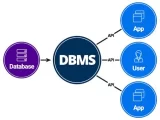
Comprehensive Data Science with Python: From Basics to Advanced Techniques
March 30, 2024Course Description and Objectives: This course introduces students to the field of data science using Python, one of the most popular programming languages for data analysis and machine learning. Students will learn how to process, clean, visualize, and analyze data, as well as apply cutting-edge machine learning techniques. By the end of the course, students will be equipped with the skills to become proficient data scientists.
Introduction to Data Science and Python Basics
Introduction to Data Science
Data science is a multidisciplinary field that uses scientific methods, algorithms, processes, and systems to extract knowledge and insights from structured and unstructured data. It combines elements of statistics, machine learning, computer science, domain knowledge, and visualization to uncover hidden patterns, correlations, and trends in data.
Data science encompasses various stages of data processing, including data collection, data cleaning, data analysis, data modeling, and data visualization. It often involves the use of programming languages like Python, R, and SQL, as well as tools and libraries such as TensorFlow, PyTorch, pandas, and scikit-learn.
The goal of data science is to help organizations and individuals make better decisions, solve complex problems, and discover new opportunities by leveraging the power of data. It is widely used in fields like business, healthcare, finance, marketing, and more to drive innovation and create value.
Python Basics
Python is a versatile and beginner-friendly programming language that is widely used in data science, machine learning, web development, and many other fields. Here are some basic concepts and features of Python:
- Syntax: Python has a clean and readable syntax, making it easy to write and understand code. Indentation is used to define code blocks, unlike other languages that use curly braces.
- Variables: Variables are used to store data values. In Python, you can assign a value to a variable using the
=operator. For example:pythonx = 5
- Data Types: Python has several built-in data types, including integers, floats, strings, lists, tuples, dictionaries, and sets. You can use the
type()function to determine the type of a variable. For example:pythonx = 5
print(type(x)) # Output: <class 'int'>
- Strings: Strings are sequences of characters enclosed in single or double quotes. You can concatenate strings using the
+operator and access individual characters using indexing. For example:pythons = "Hello, world!"
print(s[0]) # Output: H
- Lists: Lists are ordered collections of items that can be of different data types. You can access elements in a list using indexing and modify them using assignment. For example:python
my_list = [1, 2, 3, 4, 5]
print(my_list[0]) # Output: 1
- Control Structures: Python supports various control structures, such as
ifstatements,forloops, andwhileloops, to control the flow of the program. For example:pythonx = 5
if x > 0:
print("Positive")
- Functions: Functions are blocks of reusable code that perform a specific task. You can define your own functions using the
defkeyword. For example:pythondef greet(name):
print(f"Hello, {name}!")
greet("Alice") # Output: Hello, Alice!
- Modules: Modules are files containing Python code that define functions, classes, and variables. You can use the
importstatement to access modules and their contents. For example:pythonimport math
print(math.sqrt(16)) # Output: 4.0
These are just a few basic concepts of Python. As you continue to learn, you’ll discover more advanced features and functionalities that Python offers.
Data Processing using Arrays
In Python, the NumPy library is commonly used for efficient data processing using arrays. NumPy provides a powerful ndarray (n-dimensional array) object that allows you to perform mathematical operations on large datasets with ease. Here’s a basic introduction to data processing using arrays with NumPy:
- Installation: If you haven’t installed NumPy yet, you can install it using pip:
pip install numpy
- Importing NumPy: To use NumPy, you need to import it into your Python script:python
import numpy as np
- Creating Arrays: You can create NumPy arrays from Python lists or using NumPy’s built-in functions. For example:python
# Create a 1D array from a list
arr1 = np.array([1, 2, 3, 4, 5])# Create a 2D array (matrix) from a list of lists
arr2 = np.array([[1, 2, 3], [4, 5, 6], [7, 8, 9]])
- Array Operations: NumPy allows you to perform mathematical operations on arrays, such as addition, subtraction, multiplication, and division. These operations are performed element-wise. For example:python
arr1 = np.array([1, 2, 3])
arr2 = np.array([4, 5, 6])# Element-wise addition
result = arr1 + arr2
print(result) # Output: [5, 7, 9]
- Array Functions: NumPy provides many functions for array manipulation and computation, such as
np.sum(),np.mean(),np.max(),np.min(), etc. For example:pythonarr = np.array([1, 2, 3, 4, 5])# Compute sum, mean, max, min
print(np.sum(arr)) # Output: 15
print(np.mean(arr)) # Output: 3.0
print(np.max(arr)) # Output: 5
print(np.min(arr)) # Output: 1
- Indexing and Slicing: You can access elements of a NumPy array using indexing and slicing. For example:python
arr = np.array([1, 2, 3, 4, 5])# Access the first element
print(arr[0]) # Output: 1# Access a slice of the array
print(arr[1:4]) # Output: [2, 3, 4]
NumPy provides many more features and functionalities for data processing using arrays. It’s a powerful library that is widely used in the scientific computing community for its efficiency and ease of use.
File Input/Output with Arrays
In Python, you can use NumPy to read and write arrays to and from files. NumPy provides functions for reading data from text files and binary files, as well as for saving arrays to files. Here’s a basic overview of file input/output with arrays using NumPy:
- Reading from Text Files: You can use the
np.loadtxt()function to read data from a text file into a NumPy array. For example, if you have a filedata.txtcontaining numerical data, you can read it into an array like this:pythonimport numpy as np# Read data from text file into a NumPy array
arr = np.loadtxt('data.txt')
- Writing to Text Files: You can use the
np.savetxt()function to write a NumPy array to a text file. For example, to write the arrayarrto a fileoutput.txt:pythonimport numpy as np# Write array to text file
np.savetxt('output.txt', arr)
- Reading from Binary Files: NumPy provides the
np.load()function to load data from a binary file (saved usingnp.save()) into a NumPy array. For example:pythonimport numpy as np# Load data from binary file into a NumPy array
arr = np.load('data.npy')
- Writing to Binary Files: You can use the
np.save()function to save a NumPy array to a binary file. For example, to save the arrayarrto a fileoutput.npy:pythonimport numpy as np# Save array to binary file
np.save('output.npy', arr)
- CSV Files: NumPy also provides functions for reading and writing CSV (Comma Separated Values) files, which are commonly used for tabular data. For example, you can use
np.genfromtxt()to read a CSV file into a NumPy array, andnp.savetxt()to write a NumPy array to a CSV file.
These are some basic examples of file input/output with arrays using NumPy. NumPy provides many more functions and options for working with files, so be sure to check the official NumPy documentation for more details and examples.
Practical Exercise
Write a Python program to read a CSV file containing student information, manipulate the data using arrays, and then save the processed data to a new CSV file.
Here’s a Python program that reads a CSV file containing student information, manipulates the data using NumPy arrays, and then saves the processed data to a new CSV file:
import numpy as np# Read data from CSV file into a NumPy array
data = np.genfromtxt('student_info.csv', delimiter=',', dtype=str)
# Manipulate the data (e.g., add a new column)
# For simplicity, let's add a new column 'Grade' with random grades
grades = np.random.choice(['A', 'B', 'C', 'D', 'F'], size=len(data), replace=True).reshape(-1, 1)
data_with_grades = np.hstack((data, grades))
# Save the processed data to a new CSV file
np.savetxt('processed_student_info.csv', data_with_grades, delimiter=',', fmt='%s')
In this example, student_info.csv is the input CSV file containing student information, where each row represents a student and each column represents a different attribute (e.g., student ID, name, age, etc.). The program reads this file into a NumPy array using np.genfromtxt(), manipulates the data by adding a new column ‘Grade’ with random grades, and then saves the processed data to a new CSV file processed_student_info.csv using np.savetxt().
Note: This is a basic example for illustration purposes. Depending on your specific requirements and the structure of your CSV file, you may need to modify the program to suit your needs.
Data Structures in Python
Introduction to Pandas Data Structure
Pandas is a powerful Python library for data manipulation and analysis. It provides two primary data structures: Series and DataFrame.
- Series: A Series is a one-dimensional array-like object that can hold various data types, such as integers, floats, strings, etc. It is similar to a column in a spreadsheet or a SQL table. A Series has two main components: the data and the index. The index is like a label for each data point in the Series. You can create a Series from a list or array like this:python
import pandas as pddata = [1, 2, 3, 4, 5]
series = pd.Series(data)
- DataFrame: A DataFrame is a two-dimensional labeled data structure with columns of potentially different data types. It is like a spreadsheet or a SQL table. You can create a DataFrame from a dictionary of lists or arrays like this:python
import pandas as pddata = {
'Name': ['Alice', 'Bob', 'Charlie', 'David'],
'Age': [25, 30, 35, 40],
'City': ['New York', 'Los Angeles', 'Chicago', 'Houston']
}
df = pd.DataFrame(data)
In both Series and DataFrame, you can perform various operations, such as indexing, slicing, grouping, merging, and aggregation. Pandas also provides powerful tools for handling missing data, reshaping data, and working with time series data.
Pandas is widely used in data analysis, data cleaning, data visualization, and machine learning applications. It provides a fast and efficient way to work with structured data, making it an essential tool for data scientists, analysts, and researchers.
Computing Descriptive Statistics
In Python, you can use the Pandas library to compute descriptive statistics for your data. Pandas provides a describe() function that generates various summary statistics, such as count, mean, standard deviation, minimum, maximum, and percentiles, for each column in a DataFrame. Here’s how you can use it:
import pandas as pd# Create a sample DataFrame
data = {
'Name': ['Alice', 'Bob', 'Charlie', 'David', 'Eve'],
'Age': [25, 30, 35, 40, 45],
'Height': [160, 170, 180, 190, 200],
'Weight': [55, 70, 85, 100, 115]
}
df = pd.DataFrame(data)
# Compute descriptive statistics
summary_stats = df.describe()
# Display the summary statistics
print(summary_stats)
This will output a DataFrame containing the count, mean, standard deviation, minimum, 25th percentile, 50th percentile (median), 75th percentile, and maximum values for the ‘Age’, ‘Height’, and ‘Weight’ columns. The ‘Name’ column, being a string, is excluded from the summary statistics.
You can also compute individual summary statistics, such as the mean, median, and standard deviation, for a specific column using methods like mean(), median(), and std(). For example:
# Compute the mean of the 'Age' column
mean_age = df['Age'].mean()
print("Mean Age:", mean_age)# Compute the median of the 'Height' column
median_height = df['Height'].median()
print("Median Height:", median_height)
# Compute the standard deviation of the 'Weight' column
std_weight = df['Weight'].std()
print("Standard Deviation of Weight:", std_weight)
Pandas also provides many other statistical functions and methods for data analysis, so be sure to check out the Pandas documentation for more information.


















